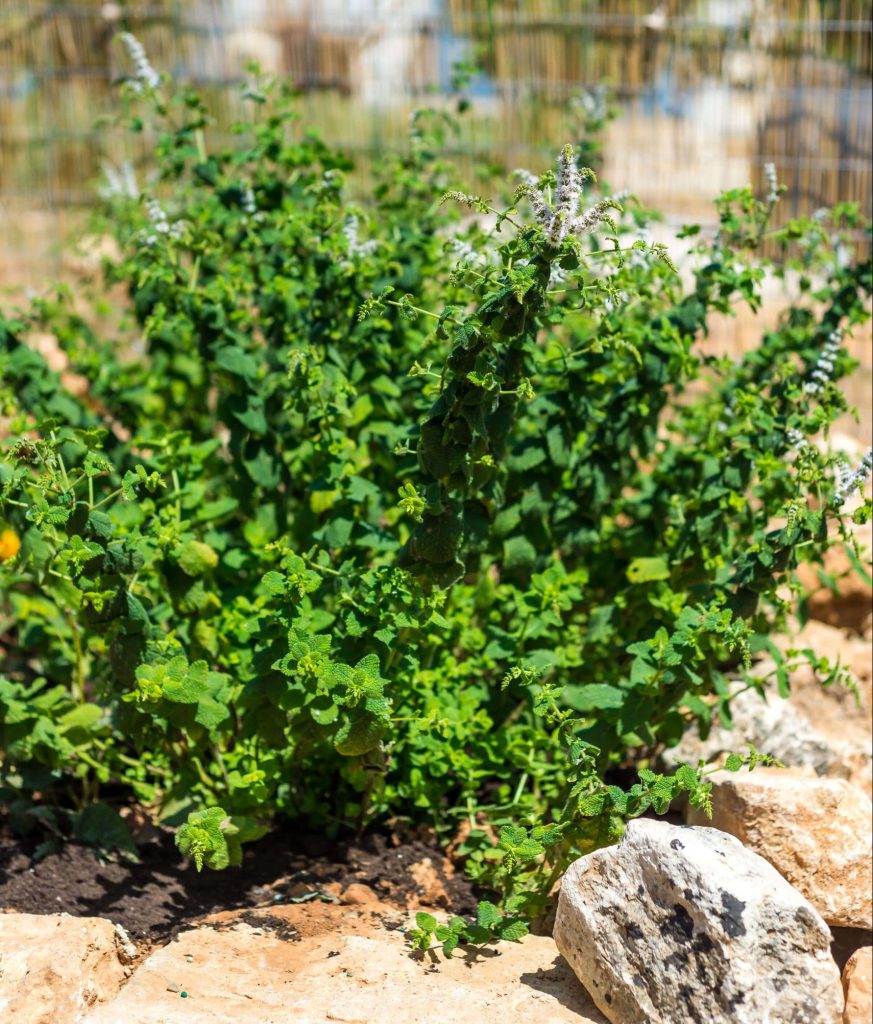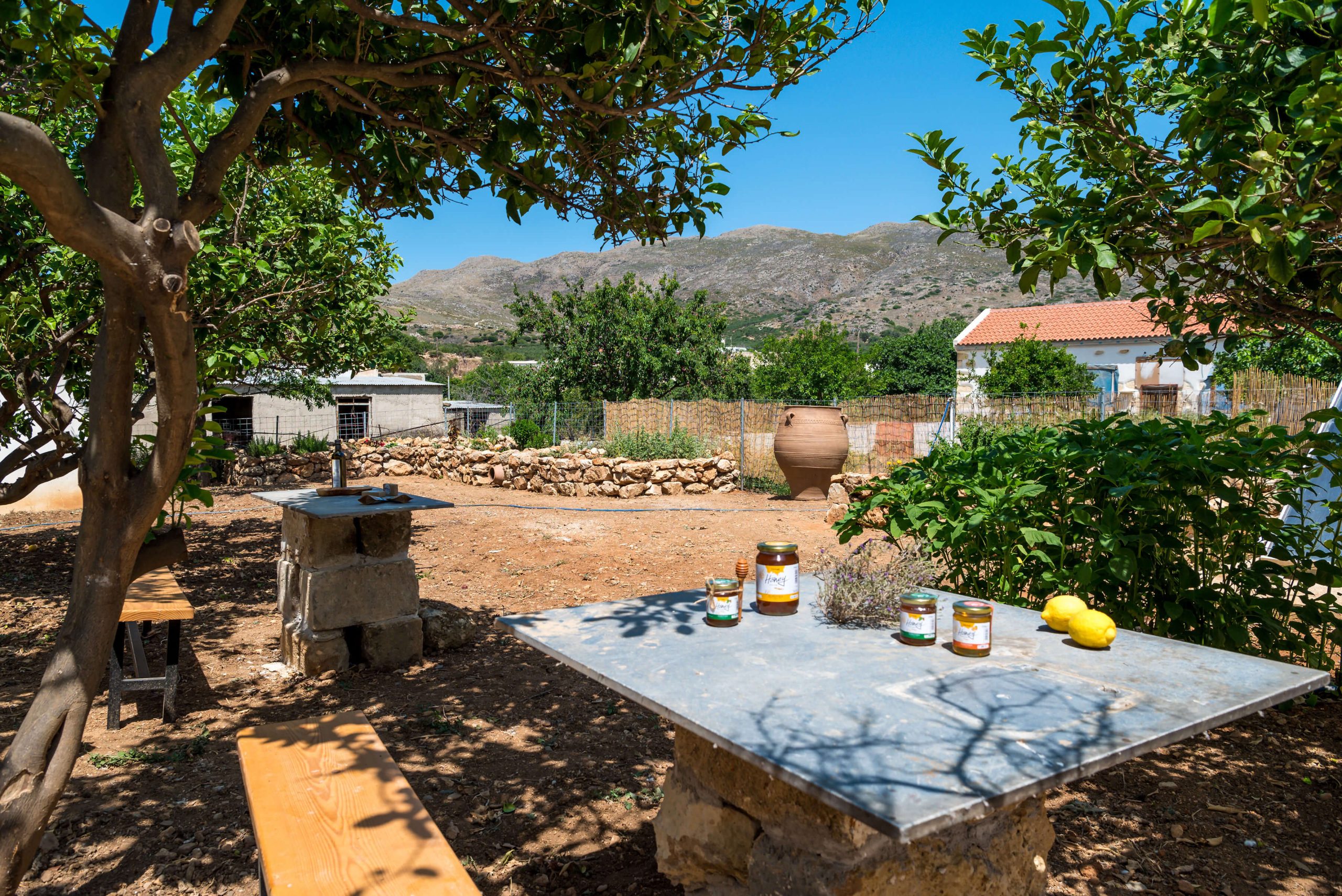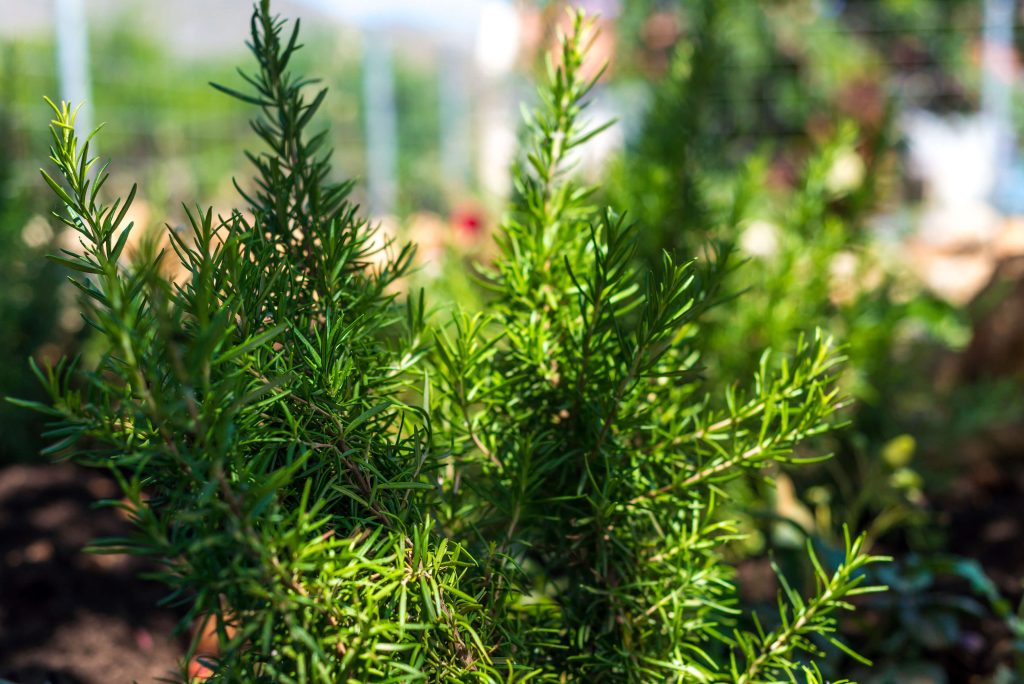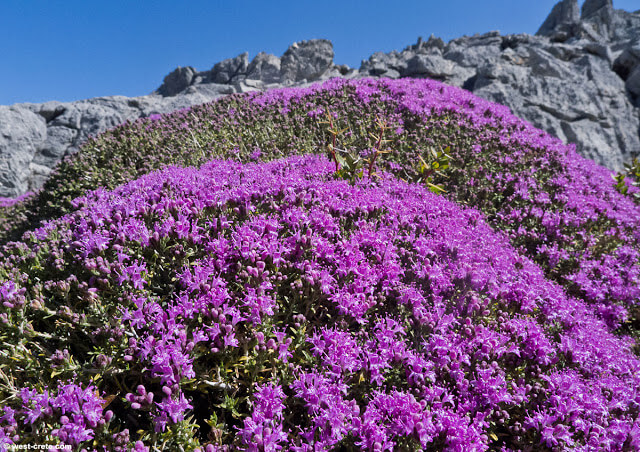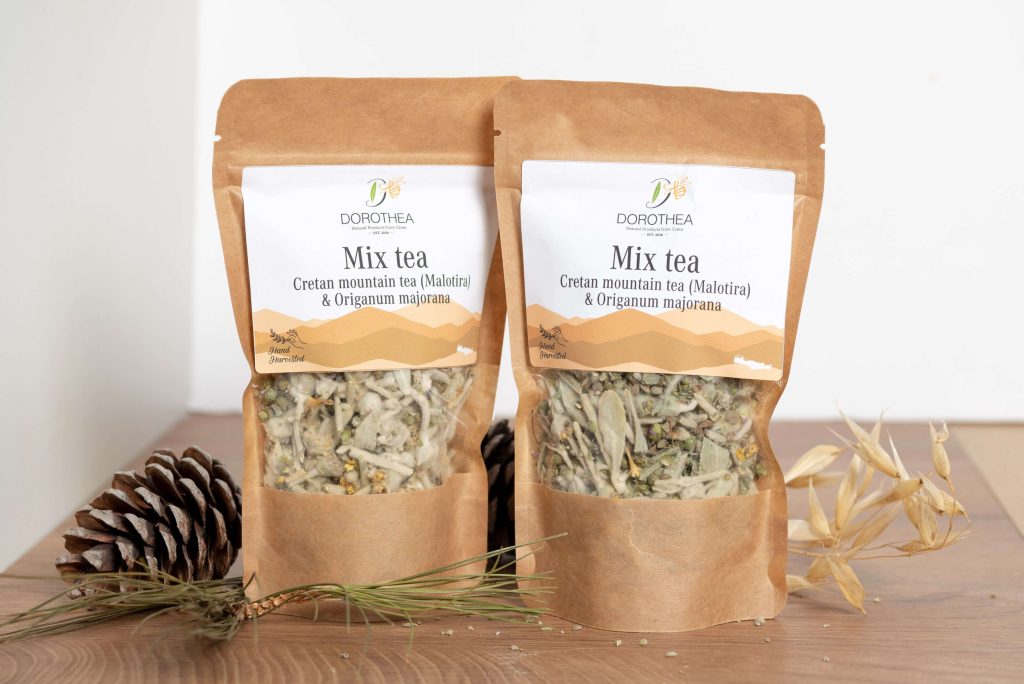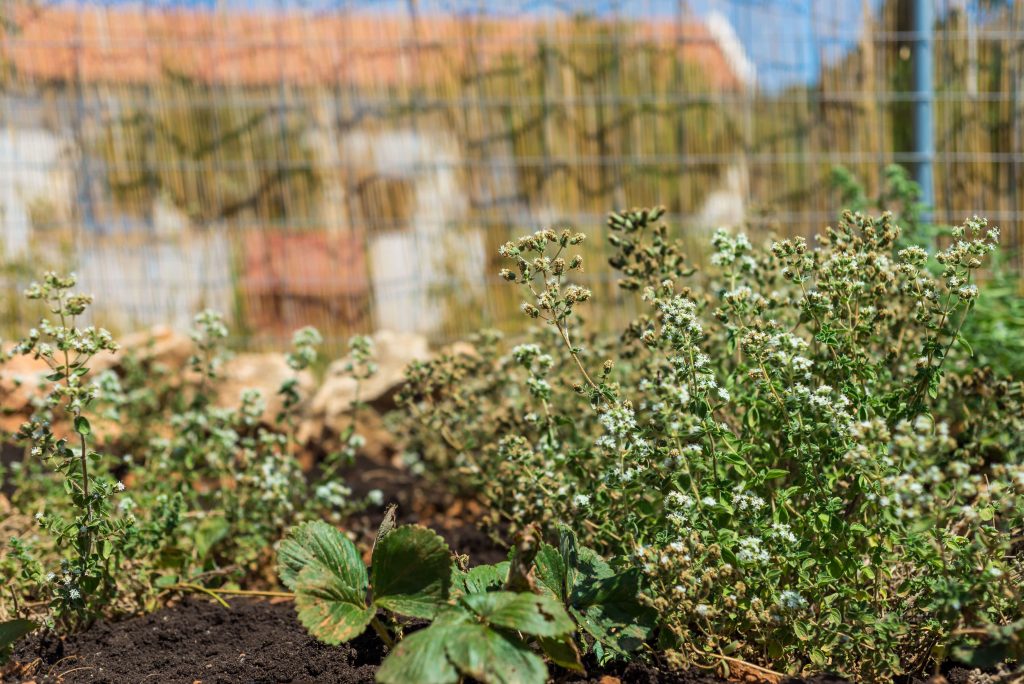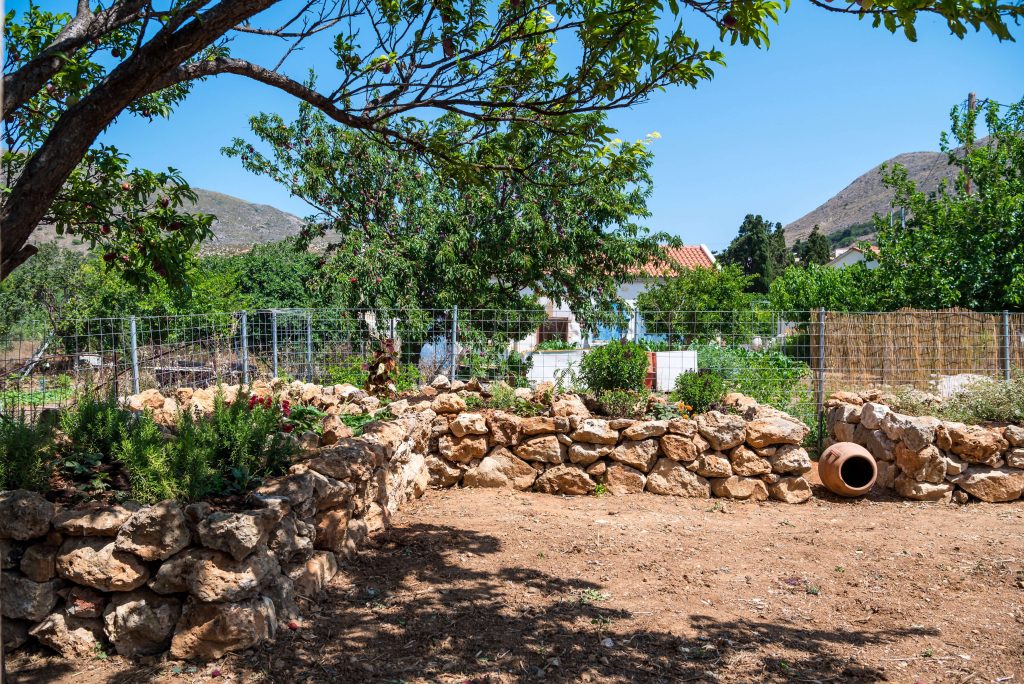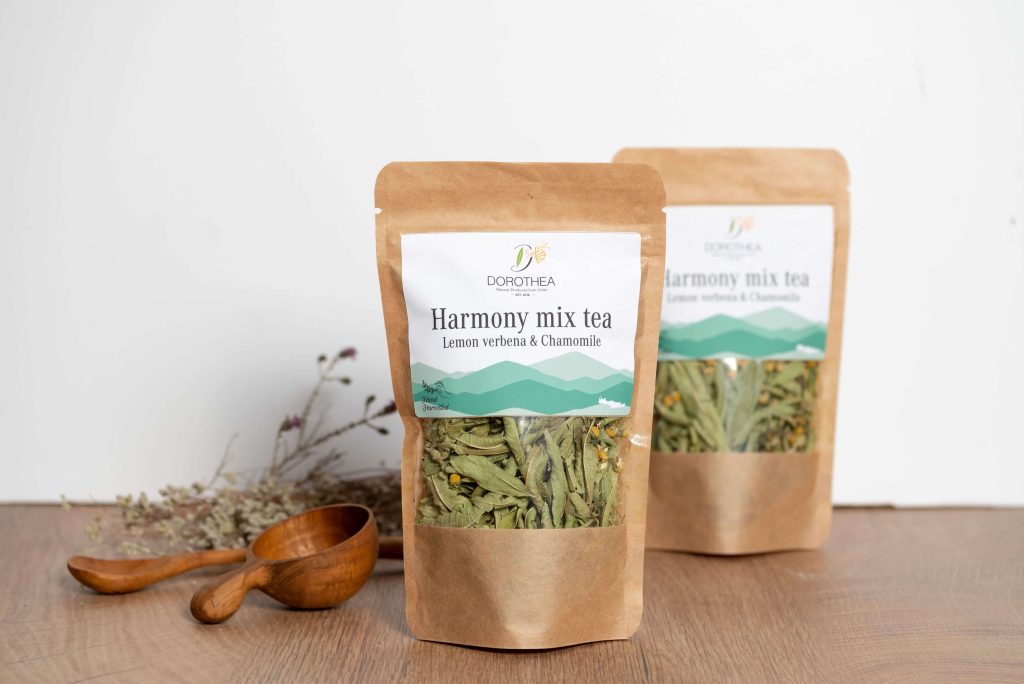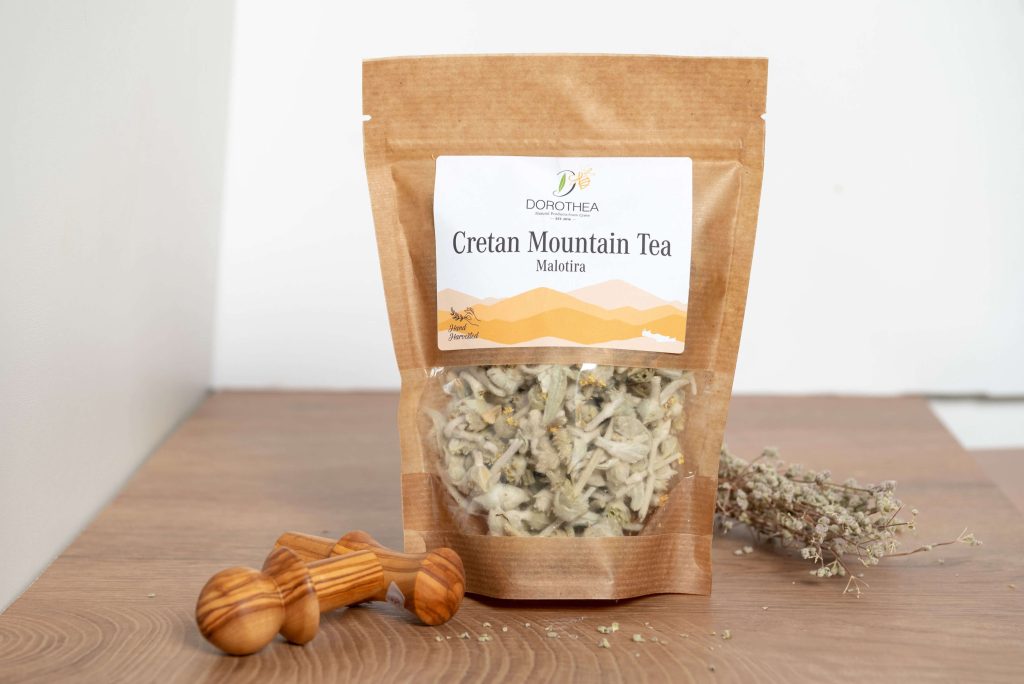Spearmint
It is cultivated by using offshoots on a light and slightly humid soil.
Parts used: The parts above ground, which are collected just before bloom, and subsequently dried in a shady place as quickly as possible, with temperatures below 35°C.
Usage: The essential oil is used externally against muscle pain and nerve pain. Attention: Products containing essential oil must not get in contact with the face and nose. As an infusion, it is used against gastritis, bowel pain and indigestion. It supports the secretion of bile (the digestive juice of the gall), but also sweating when in fever and having the flu. Inhaling the steam of boiling leaves helps with a cold.
It is used for cooking in the Mediterranean cuisine and is a basic aromatic plant.
Important in beekeeping, it predominantly gives pollen.
It blooms from November until May.
